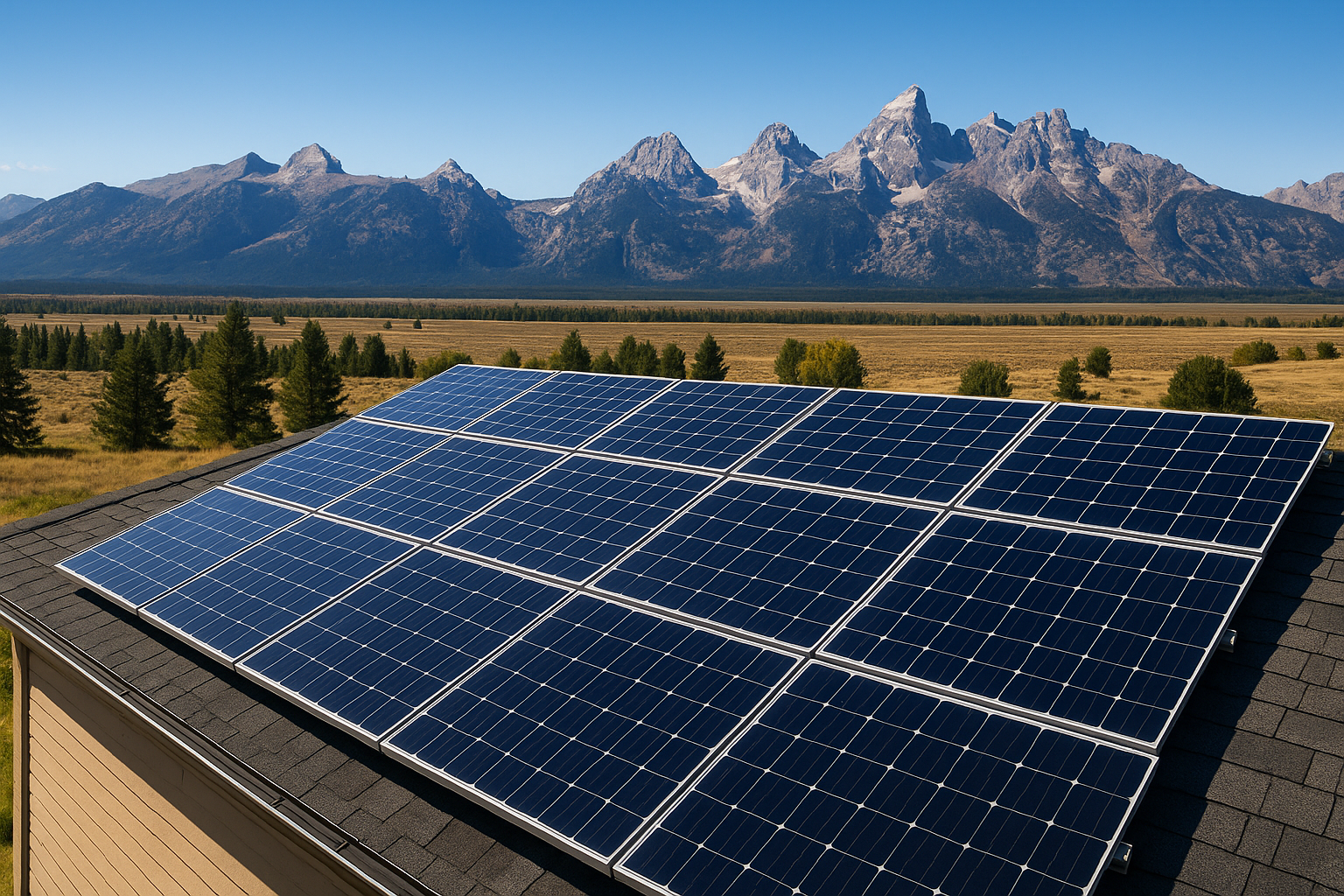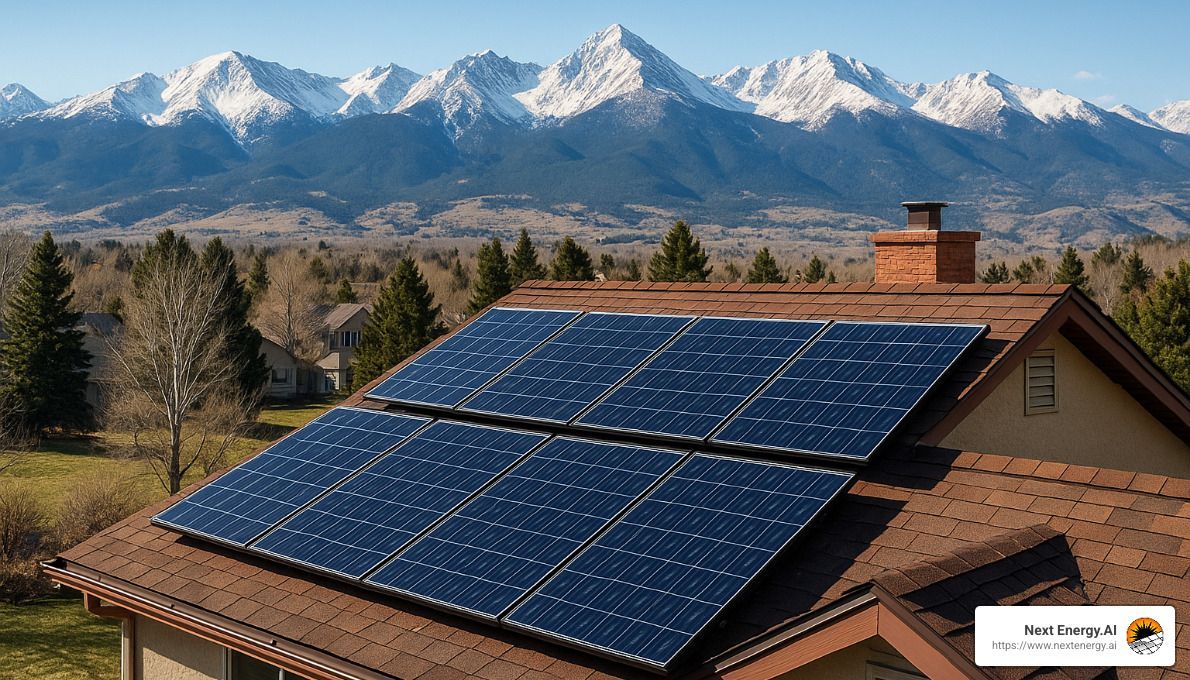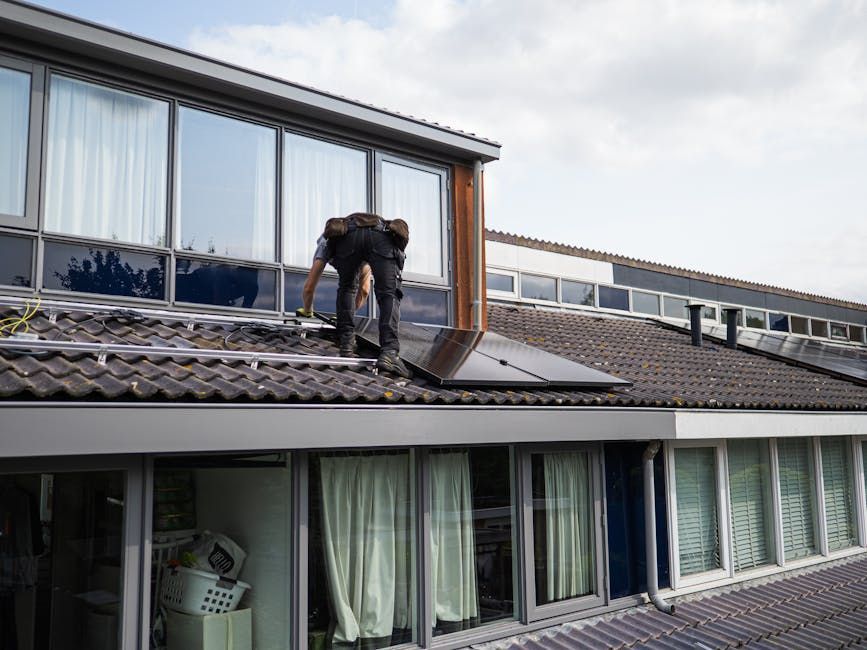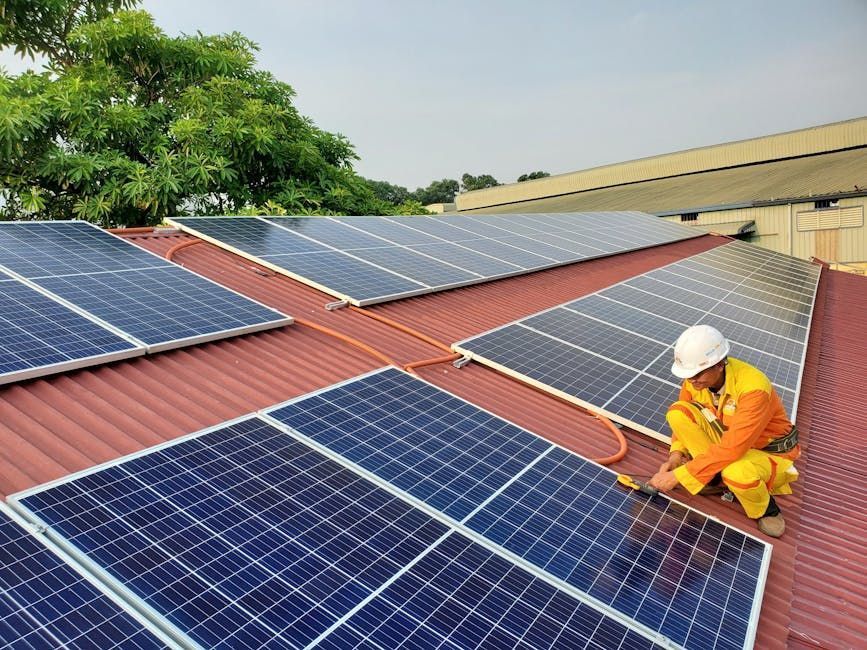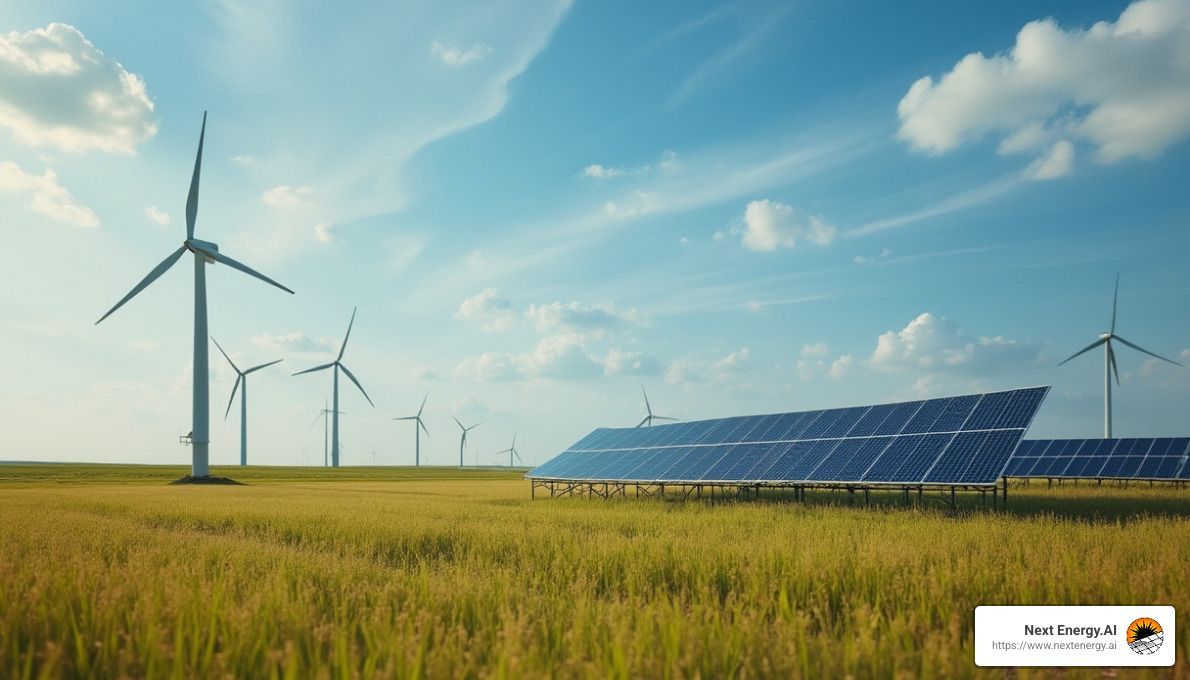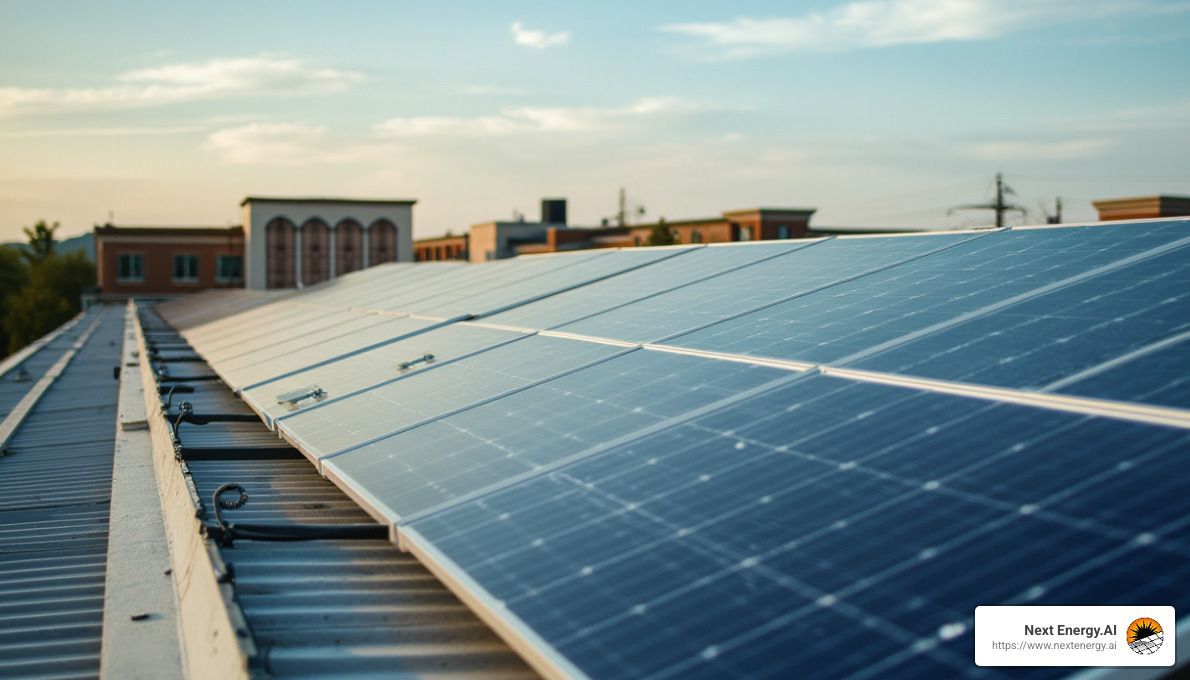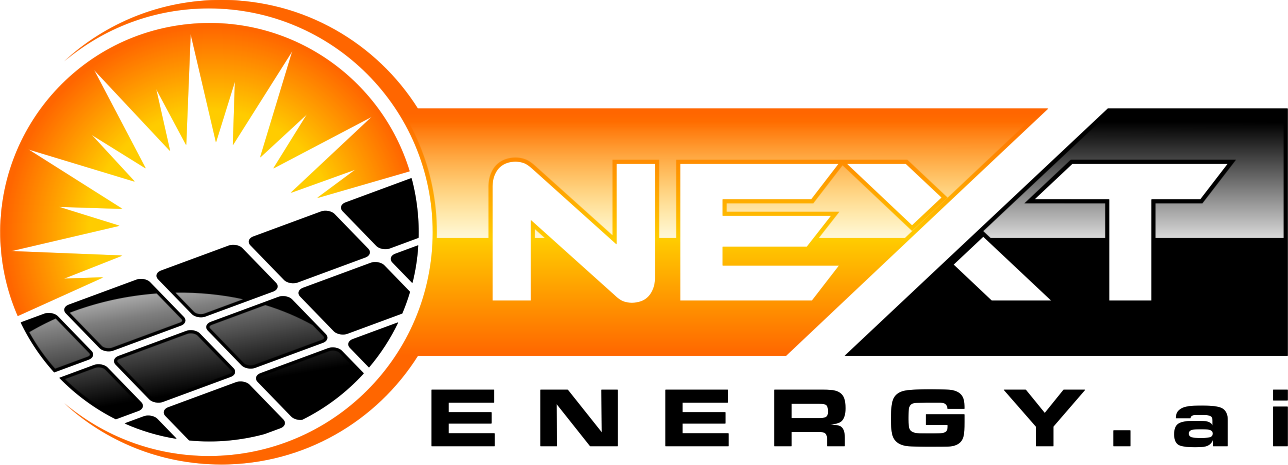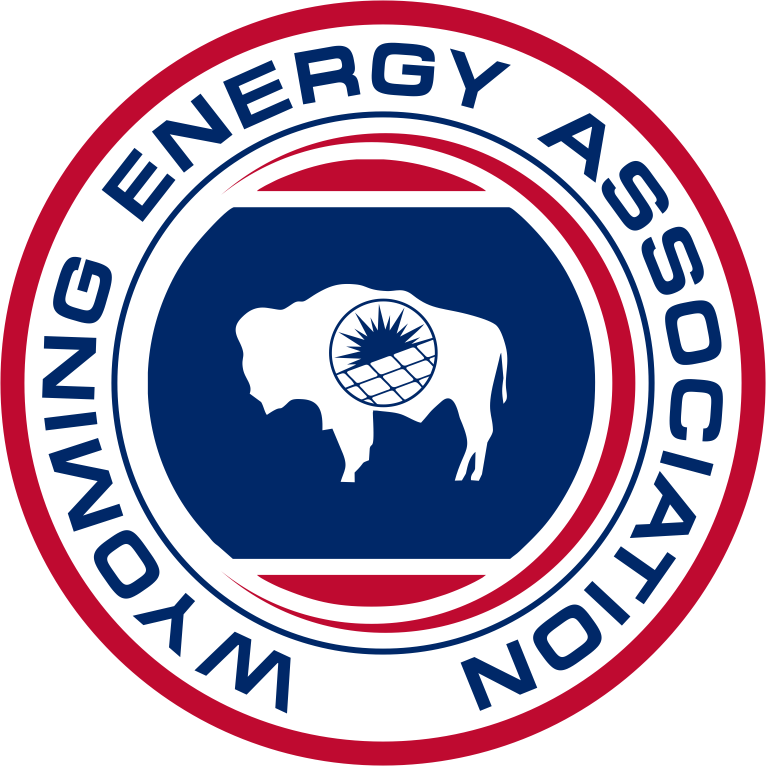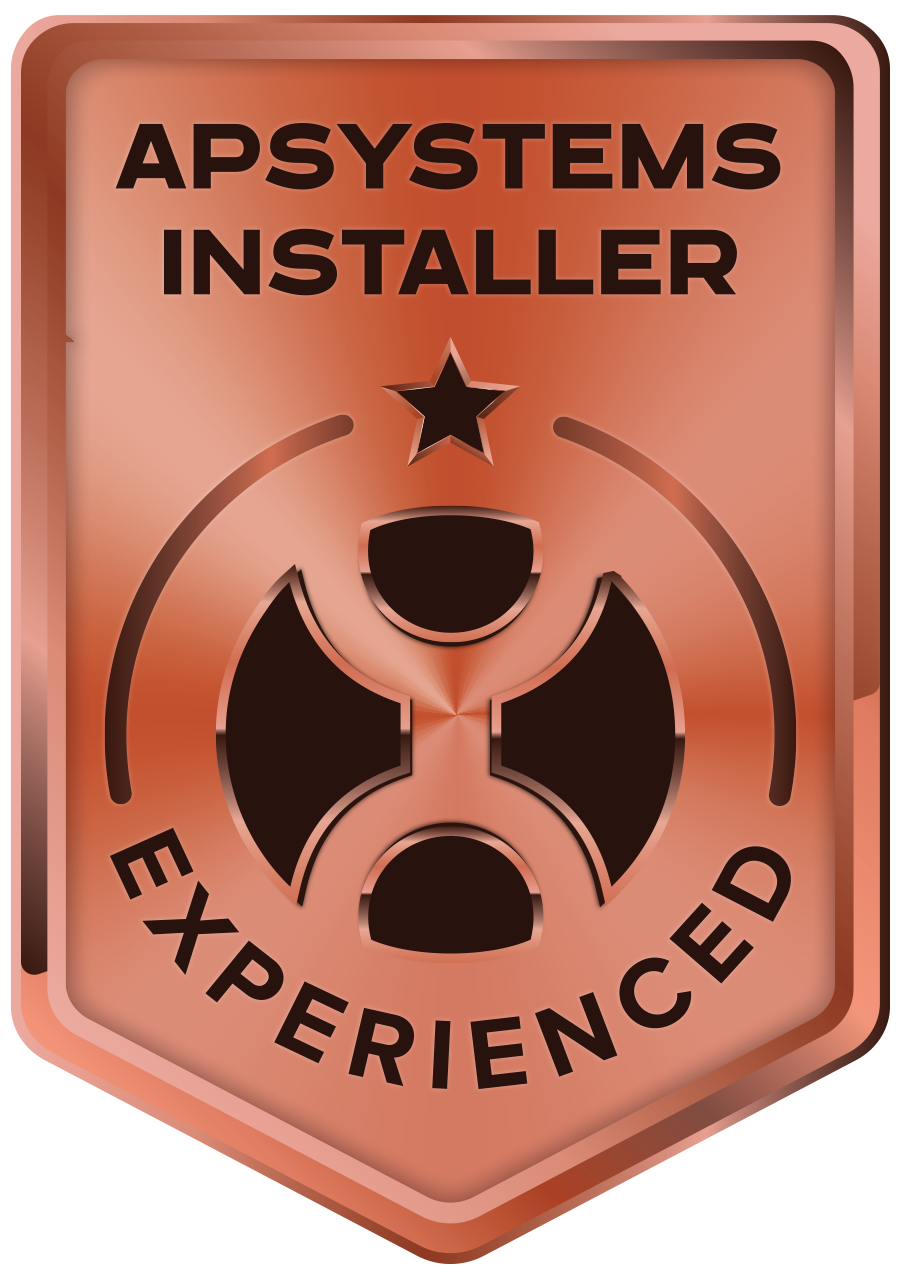Installing and Maintaining Solar Panels: A Complete Guide
Introduction
The renewable energy revolution is happening right on our rooftops. Solar panel installation and maintenance has become simpler and more accessible than most homeowners imagine, typically requiring just periodic cleaning and occasional professional check-ups to keep systems running efficiently for 25+ years.
Think of solar panels as the low-maintenance champions of home improvements. Unlike your furnace or air conditioner that needs regular attention, solar systems quietly convert sunshine into savings with minimal fuss. Most homeowners are pleasantly surprised to find how hands-off the ownership experience can be.
With proper care, your solar investment not only slashes monthly energy bills but also significantly reduces your household's carbon footprint. The environmental benefits start immediately, while the financial returns grow steadily over decades.
"I was hesitant about the maintenance commitment," shares Colorado homeowner Melissa Thompson, "but three years in, I've spent maybe an hour total on panel care, and my system has consistently outperformed the initial production estimates."
At Next Energy.AI, we've guided hundreds of Northern Colorado families through their solar journeys. We've found that understanding the basics of solar panel installation and maintenance from the beginning helps homeowners feel confident about their decision to go solar.
The installation process follows a structured timeline that professional installers can typically complete within 1-3 weeks. Once your system is up and running, modern monitoring apps make it easy to check performance from anywhere, giving you peace of mind without climbing onto your roof.
What many potential solar owners don't realize is that proper maintenance can boost energy production by approximately 15% over the system's lifetime. That's thousands of additional dollars in energy savings from just a few hours of attention each year.
As we dive deeper into home solar, these systems are designed with simplicity in mind. With no moving parts and increasingly intelligent monitoring capabilities, solar arrays represent one of the most reliable and hassle-free home improvements you can make.
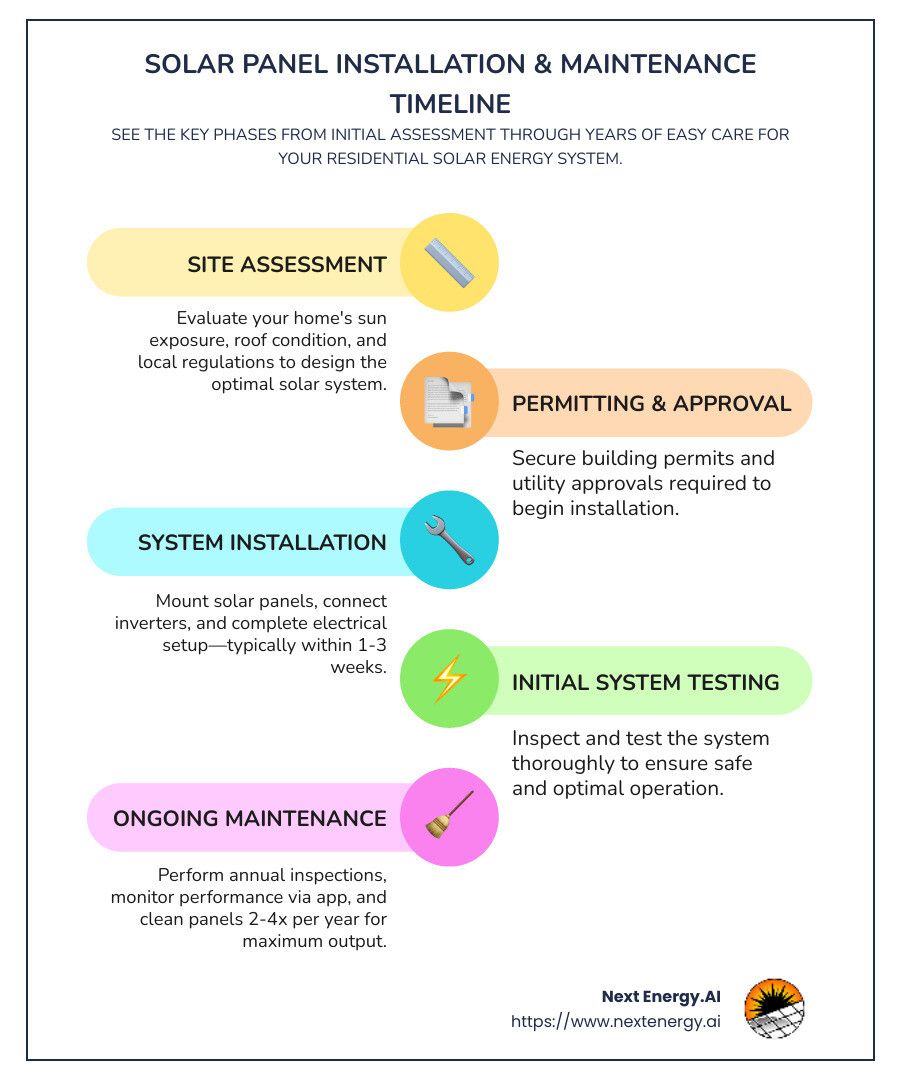
Understanding Residential Solar Panel Systems
Ever wondered what actually makes up the solar energy system on your neighbor's roof? Before diving into solar panel installation and maintenance, let's explore the components that work together to turn sunshine into electricity for your home.
Think of a solar energy system as a team where each player has a specific role. Together, they capture sunlight, convert it to usable power, and even send excess energy back to the grid (often earning you credits on your utility bill).
Main Components of a Residential Solar Panel System
At the heart of every solar system are the panels themselves—those sleek, dark rectangles you see on rooftops. But there's much more to a complete system than meets the eye.
The solar panels (or PV modules) are your energy collectors, capturing sunlight and converting it to direct current electricity. They're the workhorses of your system, silently generating power whenever the sun shines on them.
Your system's inverter plays the crucial role of translator, converting the DC electricity from your panels into the AC electricity your home appliances use. You might have a single string inverter serving your entire array, microinverters attached to individual panels, or power optimizers that combine features of both approaches.
The mounting system securely anchors everything to your roof, ensuring your investment stays put through storms and high winds. And if you opt for battery storage, you'll gain the ability to use your solar electricity even when the sun isn't shining—a game-changer during power outages.
Many homeowners love the monitoring system that comes with modern installations. These user-friendly apps let you track production in real-time and spot any issues before they affect your energy savings.
As solar expert Zain Jan puts it: "Unlike a car, where you drive it every day and there's moving parts and a much higher chance of something happening, solar panels don't really have any moving parts." This simplicity is exactly why solar panel installation and maintenance is so straightforward compared to other home systems.
Is Your Roof or Property Suitable?
Not every home is an ideal candidate for rooftop solar. Before you get too excited about going solar, let's check if your property is ready to harness the sun's power effectively.
Sun exposure is the most critical factor. In Northern Colorado and Southern Wyoming, south-facing roof sections capture the most sunlight. Your roof's tilt angle also matters—ideally, it should be similar to your latitude for maximum production, though panels work well within a range of angles.
Shading is the enemy of solar production. Those beautiful mature trees around your property might provide wonderful shade for your patio but could cast shadows that significantly reduce your system's output. During a site assessment, we create a detailed obstruction map to identify potential shading issues throughout the year.
Your roof's condition speaks volumes about installation feasibility. If your shingles are near the end of their life (within 5-10 years of needing replacement), it makes sense to re-roof before installing solar. This saves you the cost of removing and reinstalling panels later.
The structural integrity of your roof matters too. A typical solar array adds about 2-4 pounds per square foot—not much, but something your roof needs to handle for decades. During our assessments at Next Energy.AI, we carefully evaluate your roof's capacity to support this additional weight.
Space requirements depend on your energy goals. A typical residential panel needs about 17.5 square feet, and an average 6kW system requires 300-400 square feet of roof space. Don't have suitable roof space? Ground-mounted systems offer an excellent alternative, though they require available land and sometimes additional permits.
Solar panel installation and maintenance starts with choosing the right location. Our team at Next Energy.AI conducts thorough site assessments to ensure your system will perform optimally for decades to come. Learn more about our solar panel installation process and how we use AI to maximize your system's performance.
Solar Panel Installation and Maintenance Essentials
Going solar is an exciting journey that transforms how you power your home. Understanding what happens from decision to flip-the-switch moment helps set realistic expectations for your solar panel installation and maintenance experience.
Step-by-Step Installation Process
The path to powering your home with sunshine follows a well-established route that typically takes 2-3 weeks from start to finish (though local permits and weather can stretch this timeline).
It all begins with a thorough site survey where professionals evaluate your property to find the perfect panel placement. They'll check your roof's structural integrity and assess your electrical system to ensure everything plays nicely together.
Next comes the custom design phase. Your energy needs and site conditions drive decisions about panel count, inverter type, and mounting setup. Detailed electrical diagrams and structural plans are developed for permitting purposes.
The paperwork dance follows – submitting applications to local building departments, securing utility interconnection approval, and addressing any HOA requirements. While not the most exciting part of going solar, it's essential groundwork.
Once permits are in hand, equipment ordering begins. Your installer coordinates delivery timing to align with the installation schedule.
Installation day finally arrives! The team mounts hardware, places and secures panels, completes electrical connections, and sets up your inverter and monitoring system. This hands-on phase typically takes 1-3 days for residential systems.
After installation comes inspection and interconnection – your local building department checks the work, your utility installs or reprograms your meter, and eventually grants permission to operate (PTO).
The final step is system activation and monitoring setup. Your installer tests everything, configures your monitoring software, and trains you on basic system operation.
As Ken Nadsady, a solar installation expert, wisely notes: "You want the company that knows what they are doing, not the one with the slickest sales pitch and that avoids specifics." This advice is particularly relevant since installation quality directly impacts your system's long-term performance.
Want to understand the complete timeline? Check out our detailed guide on Understanding the Solar Installation Process & Timeline.
Permits, Approvals & Codes
Before the first panel goes up, your project needs official blessing from several authorities. Building permits ensure structural integrity and code compliance. These typically include plan reviews and on-site inspections, sometimes requiring engineered drawings for complex installations.
Electrical permits focus on proper wiring, grounding, and safety measures to meet National Electrical Code (NEC) requirements. Inspectors pay close attention to disconnects and rapid shutdown systems that keep first responders safe.
Grid-tied systems require a utility interconnection agreement that establishes terms for net metering or feed-in tariffs. Your equipment may need specific certifications (UL listing) to satisfy utility requirements.
If you have an HOA, you'll likely need their approval too. Many states have "solar rights" laws limiting HOA restrictions, but they may still have guidelines about placement and visibility. It's best to address these early in your planning process.
At Next Energy.AI, we handle all these permits and approvals for you, ensuring compliance while minimizing delays. We've steerd these waters countless times across Northern Colorado and Southern Wyoming.
Tools & Equipment Checklist
Professional solar panel installation and maintenance requires specialized tools and equipment that most homeowners don't have in their garage.
For mounting and structural work, installers use calibrated torque wrenches to properly tighten fasteners, impact drivers for securing hardware, and specialized flashing tools to ensure your roof remains watertight.
The electrical side requires precision tools like wire strippers, crimpers, multimeters, and insulation resistance testers to ensure safe, code-compliant connections.
Safety equipment is non-negotiable – fall protection harnesses, hard hats, safety glasses, and proper footwear protect our teams while they work on your roof.
We also use specialized equipment like solar pathfinders for shade analysis, thermal imaging cameras for quality control, and solar irradiance meters to verify optimal performance.
While DIY enthusiasts might eye solar installation as a potential project, the specialized equipment, safety considerations, and technical knowledge required make professional installation the smarter choice for most homeowners.
Common Installation Issues & How to Avoid Them
Even with professional installation, certain issues can arise. Being aware of potential problems helps ensure they're addressed properly.
Roof leaks are perhaps the most concerning for homeowners. These typically result from improper flashing or sealing around roof penetrations. Quality installers prevent leaks by using industry-approved flashing methods and high-quality sealants. If a leak does occur, immediate repair and resealing by qualified professionals is essential.
Electrical issues often stem from loose connections, improper grounding, or inadequate wire sizing. Following NEC guidelines and proper torque specifications prevents most problems. If electrical issues arise, professional troubleshooting and repair is the safest approach.
Shading problems can develop when installers underestimate tree growth or overlook seasonal sun path changes. Comprehensive shade analysis using specialized tools helps avoid these issues. Solutions may include strategic tree trimming, system reconfiguration, or adding power optimizers to affected panels.
Inverter placement issues occur when equipment is located in hot, dusty, or poorly ventilated areas. Following manufacturer guidelines for placement prevents premature component failure. If needed, relocating equipment or improving ventilation can resolve these problems.
Panel misalignment results from rushing installation or imprecise measurements. Careful layout planning and verification during installation ensures your system looks as good as it performs. If misalignment occurs, adjustment or reinstallation of affected panels may be necessary.
As solar expert Vasilii Smirnov notes: "It's okay to oversize your inverter by 20-25%." This kind of technical knowledge helps prevent common sizing issues that can affect system performance.
The best way to avoid installation problems? Choose an experienced, detail-oriented installer with a solid track record. At Next Energy.AI, our meticulous approach to solar panel installation and maintenance minimizes issues from day one, while our AI-improved monitoring helps catch and address any developing problems before they affect your system's performance.
Curious about the installation process? Learn more about our approach to Solar Panel Installation and how we ensure quality at every step.
Solar Panel Installation and Maintenance Best Practices
Once your solar system is up and running, proper care is the key to getting the most bang for your buck. Think of solar panel installation and maintenance as two sides of the same coin—great installation makes maintenance easier, while good maintenance ensures your system keeps performing like it should for decades to come.
How Often & How to Clean Panels
Most solar panels are pretty self-sufficient when it comes to staying clean. Mother Nature does a lot of the work through regular rainfall, washing away dust and pollen. But a little extra TLC can boost your system's performance, especially if you live somewhere dusty or dry.
For most homeowners, cleaning your panels 2-4 times per year is plenty. If you're in a particularly dusty area or somewhere with heavy pollen seasons, you might want to bump that up to every 3-4 months. And of course, after unusual events like wildfire ash or severe storms, an extra cleaning might be in order.
When it comes time to clean, timing matters. Early morning or evening is best, when panels are cool to the touch. Safety should always come first—if you can clean from the ground using extension tools, that's ideal. No need to risk life and limb climbing on your roof!
All you really need is soft water and perhaps a gentle brush or squeegee on an extension pole. In most cases, plain water does the trick. If you do need something stronger, stick with mild soap and never use abrasive cleaners that could damage the panel surface.
As Jacob Marsh, a solar expert, puts it: "Solar panels are installed at an angle and naturally rinse off with rainfall, so they generally don't need to be cleaned." This is especially true in rainier climates, but even a little maintenance can make a difference in your energy production.
When winter rolls around, it's usually best to let snow melt naturally. The dark surface of the panels helps speed this process along. If you absolutely must remove snow, use only a soft brush with an extension pole, and never apply hot water to cold panels—the thermal shock can crack the glass. Instead, "apply lukewarm water, never hot water to prevent thermal shock, and allow tilt and residual heat to displace snow."
For more detailed guidance on cleaning techniques, check out Wizer Energy's guide on how to clean solar panels.
Maintaining Other System Components
While panels tend to get all the glory, don't forget about the other parts of your solar system that need attention too.
Your inverters are the workhorses of your system, converting DC electricity from your panels into usable AC power for your home. Make it a habit to check those status lights monthly, and once a year, clear any dust from vents and heat sinks to prevent overheating. Most manufacturers will release firmware updates occasionally, so be sure to apply those when recommended. That string inverters typically last 10-15 years, while microinverters might go the full 25-year distance with your panels.
The mounting hardware holding everything in place deserves an annual once-over too. Look for any loose bolts or signs of corrosion, and re-tighten fasteners according to manufacturer specifications if needed. If your system required roof penetrations, verify those seals are still intact to prevent any leaks.
If you've invested in battery storage, regular monitoring of charging cycles is important. Make sure they're kept in a properly ventilated space with appropriate temperature control, check terminal connections yearly, and perform capacity testing as recommended by your battery manufacturer.
Don't overlook your electrical connections either. A visual inspection can catch early signs of corrosion or damage, and periodic thermal imaging can identify potential hot spots before they become problems. Verifying proper torque on electrical connections can prevent issues down the road.
Many newer systems include SafeDC™ technology, which automatically reduces DC voltage to around 1V per module when AC power is off—a great safety feature when maintenance is needed.
Weather Impacts & Seasonal Care
Your solar system will face different challenges throughout the year, and understanding these seasonal impacts can help you provide better care.
During hot weather, panels actually lose efficiency—approximately 1% for every degree Celsius above 77°F (25°C). Ensuring good airflow beneath your panels by maintaining proper mounting height can help mitigate this effect. In hot, dry climates, more frequent cleaning might be necessary to prevent efficiency-robbing dust buildup.
Cold weather and snow aren't usually major concerns. Most panels are designed with enough tilt to shed snow naturally, helped along by their dark surface that absorbs heat. For stubborn snow, a soft brush with an extension pole can help, but never use hot water on cold panels—the thermal shock could crack them.
Worried about hail? Rest easy. Modern solar panels are tough cookies, tested to withstand hail up to 1 inch in diameter. The Department of Energy's National Renewable Energy Laboratory found that out of 50,000 panels they examined after a severe hailstorm, only one was damaged! You can read more about this impressive durability in the Department of Energy's hail study. Still, a visual inspection after extreme weather is always a good idea.
For wind resistance, proper installation is your best protection. After severe storms, take a quick look to make sure nothing has shifted and check that mounting hardware remains secure.
As the seasons change, your maintenance focus should too:
- Spring: Check for any winter damage and clean off the pollen that's likely accumulated
- Summer: Keep an eye on efficiency during heat waves
- Fall: Clear away leaves and debris before winter sets in
- Winter: Let Mother Nature handle snow removal when possible
Re-roofing & System Removal
If your roof needs replacement during your solar system's lifetime (which is likely, given their 25+ year lifespan), some careful planning will be needed.
Removing and reinstalling a solar system typically costs between $1,500 and $6,000, depending on your system size, roof complexity, and accessibility. The process involves proper system decommissioning, careful panel removal, complete hardware removal, the actual roofing work, reinstallation of mounting hardware and panels, and finally, electrical reconnection and testing.
When planning for this kind of project, coordination is key. Work with both your roofing and solar contractors well in advance, and consider whether any components might be due for an upgrade anyway. It's also smart to document your original system configuration (photos are great for this) to ensure accurate reinstallation.
At Next Energy.AI, we offer complete re-roofing coordination services, working directly with roofing contractors to minimize system downtime and ensure everything goes back exactly where it should be. Our team in Northern Colorado has helped dozens of homeowners steer this process smoothly.
Regular maintenance isn't just about keeping things clean—it's about protecting your investment and maximizing your energy production for decades to come. With these best practices, your solar system will keep delivering clean, affordable energy with minimal effort on your part.
Monitoring, Troubleshooting & Warranties
Your solar system isn't just a set of panels on your roof—it's a sophisticated power plant that comes with smart monitoring tools to keep things running smoothly. Today's systems let you track performance right from your smartphone, giving you peace of mind and early warnings if something's not quite right.
Detecting and Addressing System Failures
Even the most reliable solar systems can occasionally hiccup. Knowing what to look for helps you catch small issues before they become expensive problems.
Most solar system issues stem from a few common sources. Inverter malfunctions are the most frequent culprits, usually announcing themselves through error codes or warning lights. Panel degradation beyond normal wear and tear, loose electrical connections, and microcracks in solar cells can also impact your system's performance.
Thankfully, spotting these problems doesn't require climbing on your roof every weekend. Modern monitoring systems do most of the detective work for you by tracking production and alerting you to unexpected drops. For a more thorough check, nothing beats a professional inspection with specialized tools.
"Use IR thermal imaging to detect thermal hotspots indicative of cell or panel faults," recommends one of our maintenance specialists. This technology can quickly identify problems across large arrays without needing to disconnect anything.
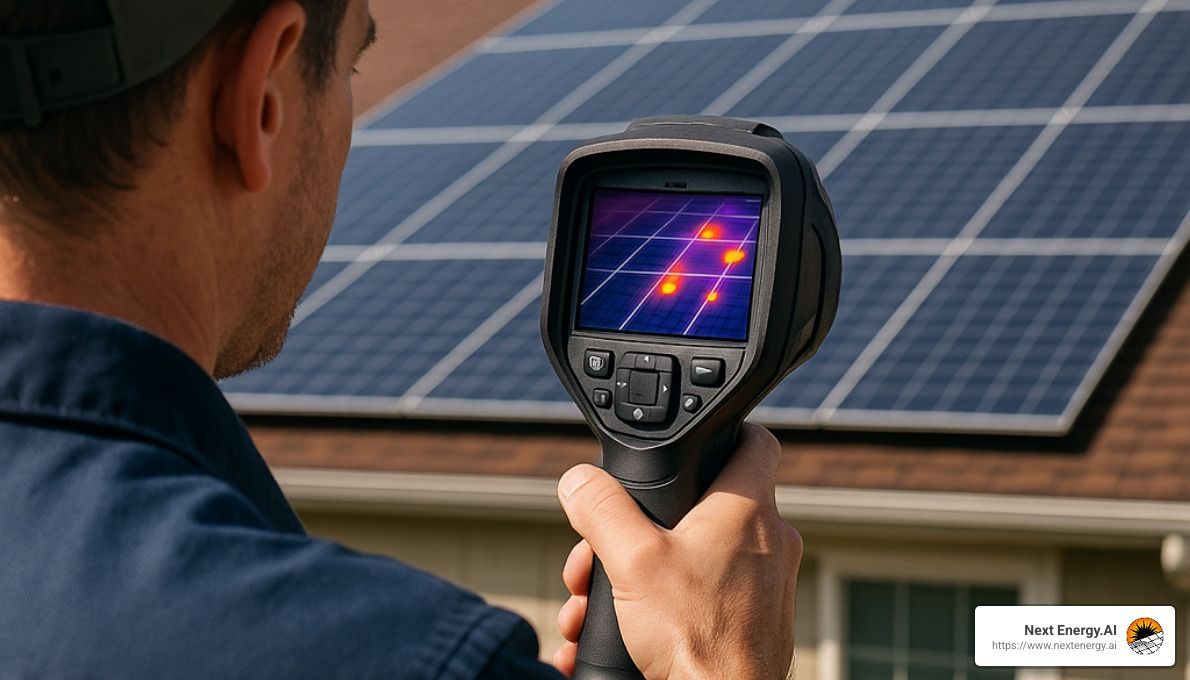
If you notice your system underperforming, start with the basics: check your monitoring app for error codes, glance at visible components for obvious damage, and verify your inverter's status lights. For anything beyond these simple checks, it's best to call in the professionals. At Next Energy.AI, we can remotely diagnose many issues before even visiting your home, saving time and reducing service costs.
Warranty Coverage & What to Do If Installer Disappears
Good news: solar systems come with some of the most comprehensive warranties in the home improvement world. Understanding what's covered gives you confidence in your long-term investment.
Most solar panels include two types of warranties: a product warranty covering physical defects (typically 10-12 years) and a performance warranty guaranteeing minimum output levels (usually 25 years with at least 85% of original output). Inverters generally carry 10-25 year warranties depending on type, while installation workmanship warranties typically cover 5-10 years.
But what happens if your installer goes out of business? Don't panic—you're not left high and dry. Your equipment warranties come from the manufacturers, not the installer. If your original company disappears, you can:
- Contact manufacturers directly about equipment issues
- Find a new service provider to transfer your monitoring access
- Gather all your system documentation and warranty certificates
- Research new maintenance partners who have experience with your equipment
As solar expert Ken Nadsady wisely advises homeowners in this situation: "Ask how often they service existing systems versus new installs, determine which equipment brands the installer repairs, and understand the process for external system servicing."
For more guidance on handling maintenance when your installer is no longer available, check out Solar United Neighbors' Solar Maintenance FAQ.
At Next Energy.AI, we've helped many "solar orphans" whose original installers are no longer available, providing seamless support and monitoring transfers.
Realistic Costs of Solar Panel Installation and Maintenance
Let's talk money—specifically, what solar panel installation and maintenance actually costs over the life of your system.
The national average for installing a complete solar system runs between $18,000 and $45,000 before incentives, with variables including system size, equipment quality, roof complexity, and location. But what about the ongoing costs?
Most solar owners are pleasantly surprised by how affordable maintenance really is. A good rule of thumb is to budget 0.5-1% of your initial system cost annually for maintenance—though many homeowners report spending nothing on upkeep for several years after installation.
When maintenance is needed, here's what you might expect to pay:
- Professional inspection: $150-$300 per visit
- Professional panel cleaning: $10-$20 per panel
- Inverter replacement (typically after 10-15 years): $1,500-$3,000
One happy solar owner shared with us: "I've had solar on my roof since 2014. I haven't spent a penny on maintenance." This isn't unusual—most issues that arise during the first decade are typically covered under warranty.
There are a few additional costs to keep in mind: if you need to re-roof during your solar system's lifetime, expect to pay $1,500-$6,000 for removal and reinstallation. Optional additions like critter guards might run $500-$1,000, and some advanced monitoring subscriptions cost $10-$20 monthly.
Here in Northern Colorado, our team at Next Energy.AI offers maintenance plans that include regular check-ups and monitoring, often catching small issues before they become expensive problems. Our AI-improved monitoring provides an extra layer of protection, analyzing performance patterns that might escape traditional monitoring systems.
Long-Term Benefits & Choosing a Service Provider
Investing in solar isn't just about the immediate satisfaction of lower electric bills – it's about creating lasting value for your home and our planet. With proper solar panel installation and maintenance, your system becomes a reliable asset that continues to deliver benefits for decades.
Finding a Reputable Maintenance or Repair Provider
Not all solar service companies are created equal. When it's time for maintenance or repairs, you'll want a team that knows their way around your specific system.
Look for providers with proper electrical licensing and industry certifications – these credentials aren't just fancy wall decorations, they represent real knowledge and safety standards. Experience with your particular system type matters tremendously since solar technology varies significantly between manufacturers.
Pay attention to a company's maintenance-to-installation ratio. While this might seem like an odd metric, it reveals a lot about their business model. Companies primarily focused on racking up new installations might have skeleton crews handling service calls, leading to frustrating delays when you need help.
"We've seen customers wait weeks for service from installation-focused companies," says Spencer from Next Energy.AI. "That's why we've built our team with a strong emphasis on ongoing support, not just the initial sale."
Ask potential providers direct questions about their response time guarantees and monitoring capabilities. Modern solar service should include advanced diagnostics that can spot issues before they become problems. At Next Energy.AI, our AI-improved monitoring does exactly this – identifying potential concerns before they affect your system's performance.
Benefits of Regular Solar Panel Installation and Maintenance
Taking care of your solar investment pays dividends in multiple ways. Well-maintained panels can produce up to 15% more energy than neglected ones – that's a significant boost to your return on investment. Clean panels simply capture more sunlight, and regular professional inspections catch small issues before they grow into expensive problems.
Solar panel installation and maintenance also extends your system's lifespan. While manufacturers typically warranty panels for 25 years, well-maintained systems often perform effectively well beyond this timeframe. By addressing minor issues promptly, you prevent the kind of cascading failures that can prematurely end your system's productive life.
Your warranty protection depends on proper care too. Many manufacturers require documentation of regular maintenance to honor their warranties. When a professional services your system, they create a valuable record of proper care that can be crucial if warranty claims become necessary.
The financial benefits stack up impressively over time. One of our Fort Collins clients saw a 12% increase in system output after implementing our recommended maintenance schedule. Over their system's 25-year life, this improvement will generate thousands in additional savings – all from simply keeping their system in top condition.
The environmental impact shouldn't be overlooked either. Optimized systems produce more clean energy, and longer system lifespans mean less manufacturing and disposal impact. Your well-maintained solar array maximizes carbon offset throughout its operational life, multiplying your positive environmental impact.
At Next Energy.AI, we've built our service approach around these long-term benefits. Our team doesn't just fix problems – we help prevent them through proactive maintenance and advanced monitoring that keeps your system performing at its best year after year. After all, the best solar system is one that quietly does its job for decades, requiring minimal attention while delivering maximum value.
Frequently Asked Questions about Solar Panel Installation and Maintenance
What are the typical annual maintenance tasks and costs?
Most homeowners are pleasantly surprised by how little maintenance their solar systems actually require. You'll find that keeping your system in top shape is pretty straightforward.
For typical residential systems, your annual maintenance will be minimal. You'll want to give your panels a visual once-over periodically to check for any obvious issues like debris or damage. Cleaning your panels about 2-4 times per year keeps them operating efficiently, though this varies depending on your local conditions – dusty areas might need more attention, while rainy regions often need less.
Monitoring your system's performance is easier than ever with today's smartphone apps and web portals. This lets you catch any performance drops early, often before they become serious problems.
Every couple of years, it's worth having a professional inspection (usually costing between $150-$300) to check the components that aren't visible to the untrained eye.
The good news? Most of our customers report spending absolutely nothing on maintenance during the first several years after installation. When costs do eventually arise, it's typically for inverter replacement after 10-15 years of service, which runs about $1,500-$3,000.
As one of our delighted customers put it: "Zero maintenance. Easiest no-brainer purchase I have made in the past five years." That's exactly the experience we aim to provide with our solar panel installation and maintenance services.
How can I monitor my system's health from my phone?
Today's solar systems come with monitoring capabilities that transform your smartphone into a command center for your energy production. It's actually one of the most satisfying aspects of going solar – watching those kilowatt-hours add up in real time!
Modern monitoring apps give you real-time production data so you can see exactly how much power you're generating right now. You'll also get historical comparisons that help you spot trends in your system's performance over time. If something goes wrong, alert systems will notify you immediately, rather than leaving you to find problems when your electric bill arrives.
Many apps even integrate weather data, helping explain why production might be lower on cloudy days. And for the financially-minded, built-in tracking tools calculate your savings and show your progress toward system payback.
At Next Energy.AI, we've taken monitoring to the next level. Our systems include AI-improved monitoring that not only tracks performance but actually predicts potential issues before they affect production. Our intuitive app visualizations make it easy to understand your system's health at a glance – no engineering degree required.
What should I consider when adding batteries later?
Many of our customers start with just solar panels and decide to add battery storage later – it's a smart approach that spreads out the investment while still giving you the flexibility to evolve your system.
When planning for future batteries, compatibility is key. Your inverter type matters significantly – some are already battery-ready, while others might need replacement when you add storage. You'll also want to ensure your solar array is properly sized to charge batteries effectively, as undersized systems might not generate enough surplus energy.
Your home's electrical panel may need upgrades to accommodate battery integration, and you'll need appropriate space for the batteries themselves, keeping in mind they require proper ventilation and temperature control.
If you're even remotely considering batteries in the future, I strongly recommend:
- Informing your installer during initial system design
- Considering battery-ready inverters from the start
- Reserving adequate space for future battery installation
- Verifying that your monitoring system can incorporate battery metrics
Adding batteries typically costs between $10,000-$20,000 depending on your desired capacity and integration complexity. While not inexpensive, the benefits are substantial – backup power during outages, protection against future utility rate changes, and the satisfaction of maximizing your self-consumption of clean solar energy.
Here at Next Energy.AI, we've helped dozens of Colorado homeowners add batteries to their existing systems, and we design all our new solar panel installation and maintenance projects with future expandability in mind. When you're ready to add that battery, we'll be here to make the process smooth and seamless.
Conclusion
The journey of solar panel installation and maintenance is one that thousands of homeowners have taken, finding it's far simpler and more rewarding than they initially expected. With proper setup and minimal upkeep, your solar system becomes not just an energy generator, but a long-term partner in your home's sustainability story.
Throughout this guide, we've walked through what really matters when it comes to getting the most from your solar investment. The truth is, these remarkable systems are designed to quietly do their job for decades with surprisingly little fuss.
What's been most interesting to me, working with hundreds of solar owners across Northern Colorado, is how consistently they express surprise at how trouble-free their systems are. As one Fort Collins homeowner recently told me, "I honestly forget it's up there most days – until I get my tiny electric bill!"
The beauty of solar lies in its simplicity. Unlike other home systems that demand regular attention, your panels silently convert sunshine into savings with no moving parts to wear out. A quality installation followed by occasional cleaning and check-ups is truly all it takes to keep things running smoothly for 25+ years.
If you're considering solar – or looking to better maintain your existing system – remember these essentials:
First, the installer you choose matters tremendously. Look beyond flashy sales pitches to find professionals with deep technical knowledge and a track record of quality installations. Next Energy.AI's team brings NABCEP certification and years of hands-on experience to every project, ensuring your system is built right from day one.
Second, while maintenance is minimal, it shouldn't be neglected. A simple cleaning schedule and periodic professional inspections can boost your energy production by up to 15% – turning a good investment into a great one.
Third, accept modern monitoring tools. Today's user-friendly apps put system performance data at your fingertips, giving you peace of mind and early warning of any issues. Our AI-improved monitoring takes this a step further, predicting potential problems before they affect your energy production.
Fourth, think long-term when planning your system. Consider future needs like re-roofing or adding battery storage, and design with these possibilities in mind. A thoughtful approach now saves headaches later.
Finally, understand your warranties and keep good records. Most quality systems come with 25-year performance guarantees, but maintaining documentation of your system care ensures you're covered if issues arise.
At Next Energy.AI, we've built our reputation on making solar simple and stress-free for homeowners across Northern Colorado and Southern Wyoming. Our approach combines technical excellence with genuine care for each customer's long-term satisfaction. From initial design through decades of clean energy production, we're with you every step of the way.
Whether you're just beginning to explore solar options or looking for better care of your existing system, we'd love to help. Our team of friendly solar experts is ready to answer your questions and provide the guidance you need to make the most of your renewable energy journey.
For more information about our solar energy system maintenance services, visit our website or call us to schedule a no-pressure consultation. Let's harness the power of the sun together!


